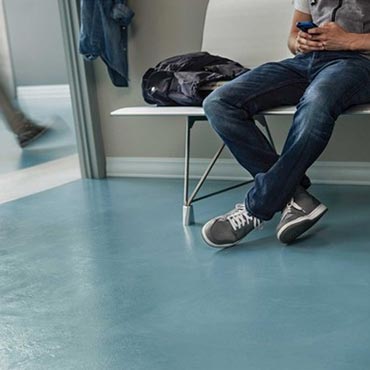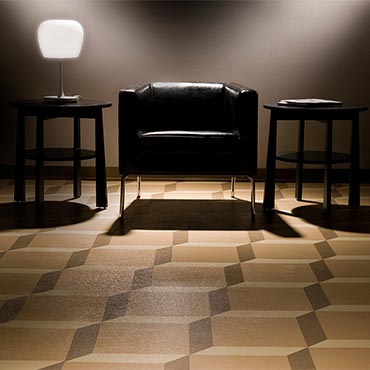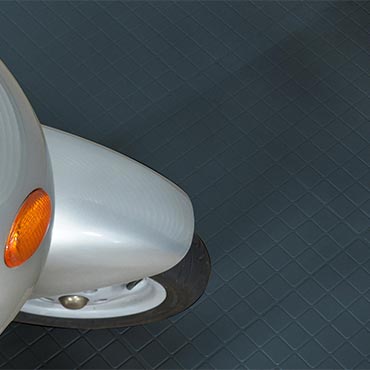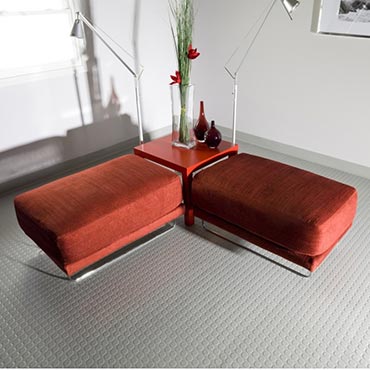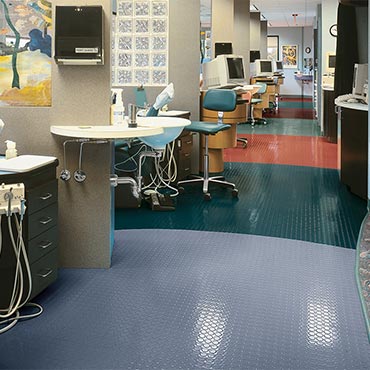Rubber Flooring

Transforming Spaces with Durable, Sustainable Rubber Flooring Solutions
Introduction: Elevating Commercial Spaces with Rubber Flooring
In the world of modern architecture, designers, specifiers, and building consultants are continuously seeking materials that marry aesthetics with performance. Rubber flooring, once known for its purely utilitarian use, has undergone a revolutionary transformation. Today, it stands as a versatile and durable option, blending vivid colors, textures, and exceptional functionality. Whether it's in hospitals, schools, or commercial spaces,
rubber flooring provides a solution where safety, resilience, and design must harmonize.
What is Rubber Flooring?
Rubber flooring is a resilient
floor covering made from natural or synthetic rubber. It’s renowned for its durability, slip resistance, and low-maintenance requirements. Thanks to technological advancements, rubber flooring now boasts a wide range of vivid colors, textures, and customizable patterns, making it suitable for spaces that demand both aesthetics and performance. Available in smooth or raised profiles—such as circular disks or raised dots—this flooring material has found its way into various institutional, commercial, and high-traffic environments where long-term durability is essential.
Features and Benefits of Rubber Flooring
Rubber flooring is packed with features that make it an ideal choice for numerous architectural applications:
- Slip Resistance: Rubber’s inherent slip-resistant qualities provide extra safety, making it ideal for stairways, landing areas, and places prone to spills.
- Durability: Designed to last 30 years or more, rubber flooring maintains its appearance even in high-traffic areas, reducing the need for frequent replacements.
- Ease of Maintenance: Rubber flooring’s non-porous surface resists stains, dirt, and grease, simplifying cleaning protocols while maintaining hygiene in healthcare, educational, and institutional environments.
- Fire Resistance: Many rubber floors achieve Class A fire ratings, meeting the stringent safety requirements for public spaces.
- Design Versatility: Architects can take advantage of rubber’s vast array of colors and customizable patterns, aligning flooring designs with other interior finishes like countertops and paint.
- Sustainability: Rubber flooring is eco-friendly, often made from recycled materials, and contributes to green building certifications such as LEED.
Why Rubber Flooring Stands Out
In comparison to other resilient flooring materials like vinyl, rubber flooring offers unparalleled performance in both safety and sustainability. Its ability to withstand heavy foot traffic, resist damage from harsh chemicals, and offer superior slip resistance sets it apart from vinyl or linoleum options. Unlike some materials that fade or wear over time, rubber retains its vibrant appearance, ensuring the longevity of design aesthetics. Its additional benefits, such as fire resistance and ease of maintenance, make it a superior choice for demanding commercial environments.
Ideal Applications for Rubber Flooring
Rubber flooring thrives in spaces where both performance and appearance matter. Its durability and safety features make it perfect for:
- Healthcare Facilities: Rubber’s hygienic and resilient properties are ideal for hospitals, operating rooms, and therapy areas.
- Educational Institutions: Rubber’s durability and easy-to-clean surface make it suitable for classrooms, art rooms, and auditoriums.
- Commercial Spaces: From gymnasiums and athletic centers to stairwells and hallways, rubber flooring performs exceptionally well in high-traffic areas.
- Public Buildings: Prisons, museums, and warehouses benefit from the strength and slip-resistant qualities of rubber.
Whether it's in wet areas like aquatic centers or spaces like weight rooms where impact and wear are concerns, rubber flooring excels as a practical, long-term solution.
Conclusion: Rubber Flooring—A Superior Choice for Architects and Specifiers
Rubber flooring has evolved into a top-tier solution that combines safety, aesthetics, and longevity. As architects, specifiers, and building consultants seek materials that push the boundaries of modern design while adhering to stringent safety and performance standards, rubber flooring offers an unparalleled balance. Its innovative features, long-term durability, and ability to enhance both functional and aesthetic aspects of a project make it a forward-thinking choice for a range of architectural applications.
Discover the Possibilities of Rubber Flooring for Your Next Project
Explore the design flexibility and practical benefits that rubber flooring offers. Revolutionize your spaces with a flooring solution that combines aesthetics, safety, and performance in one. Elevate your projects to new heights with the unmatched potential of rubber flooring.
Disclaimer: The information provided in this article is for general informational purposes only. While we strive to ensure the accuracy and reliability of the information presented, we make no warranties, express or implied, about the completeness, accuracy, reliability, suitability, or availability with respect to the content. Any reliance you place on such information is strictly at your own risk. We recommend consulting with professionals for specific advice tailored to your project’s needs, particularly regarding building codes, regulations, and product specifications.
Under no circumstances shall we be liable for any loss or damage, including without limitation, indirect or consequential loss or damage, arising from the use of, or reliance on, the information provided in this article.





